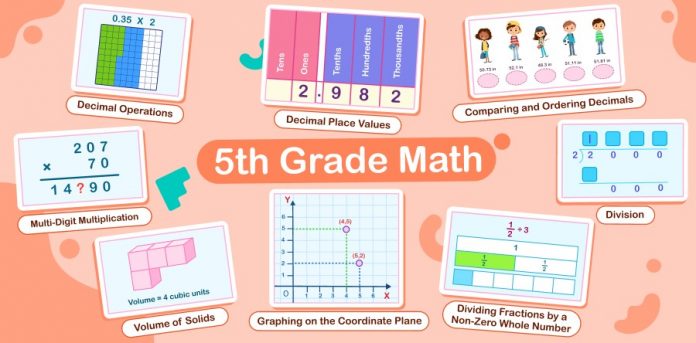Educational math is essential to every student’s academic journey and can create excitement and challenge for 5th graders. For math for 5th graders, the curriculum focuses on building upon their knowledge of basic arithmetic and introducing them to more complex concepts such as fractions, decimals, geometry, and algebraic expressions. While some children may find these concepts difficult to grasp, they can develop a strong foundation in mathematics that will serve them well throughout their academic careers and beyond with proper guidance and support.
Math & ELA | PreK To Grade 5
Kids see fun.
You see real learning outcomes.
Watch your kids fall in love with math & reading through our scientifically designed curriculum.
Parents, try for free Teachers, use for free
As 5th graders progress through their math curriculum, they are introduced to various topics and skills that will be crucial in their future studies. For example, they will learn to solve numerical expressions, add and subtract fractions, measure volume, and understand many concepts. By mastering these concepts, students will develop problem-solving skills and critical thinking abilities that can be applied to various fields, from science to finance.
In this article, we’ll concentrate on the most important concepts for 5th graders to learn and why they are crucial in building a strong mathematical foundation. We will also provide math tips and resources for parents and educators to help children succeed in their math studies.
Explore Math Worksheets!
Why Numbers and Equations are So Important for Kids?
If you want your child to be ready for higher-level math, they need to master fifth-grade math skills. Math for 5th graders teaches you how to think critically, solve problems, and look at things from different points of view. Math is also used in science, engineering, law, and many other fields. If your child is good at math, they will be able to do well in these other subjects as well.
“Mathematics is the tool specially suited for dealing with abstract concepts of any kind.” – Paul Dirac
It’s important to understand that math is crucial not only for our children’s future careers but also for their daily lives. Math plays a significant role in our everyday activities, such as determining the cost of a favorite educational toy or measuring ingredients for a recipe. Therefore, it’s essential to recognize the significance of math and encourage our children to embrace it and work hard at it. By doing so, they will reap the benefits of their efforts in the long run.
Related Reading: Most Important Math Concepts Kids Learn in 4th Grade
7 Important Fifth Grade Concepts to Master
Becoming a math genie may seem challenging for fifth-grade students, but with the right mindset and practice, it is surely achievable. The National Council of Teachers of Mathematics (NCTM) offers comprehensive guidelines and standards for math education, which include essential skills for fifth-graders such as number sense, spatial reasoning, and critical thinking. The NCTM also emphasizes the importance of incorporating technology and real-life scenarios in math instruction. In this article, we will delve deeper into the specifics of what do 5th graders learn in math. Understanding these concepts is crucial for establishing a strong foundation in math for future academic pursuits. These ideas are essential for laying a solid foundation for future mathematical endeavors.
1. Solve numerical expressions
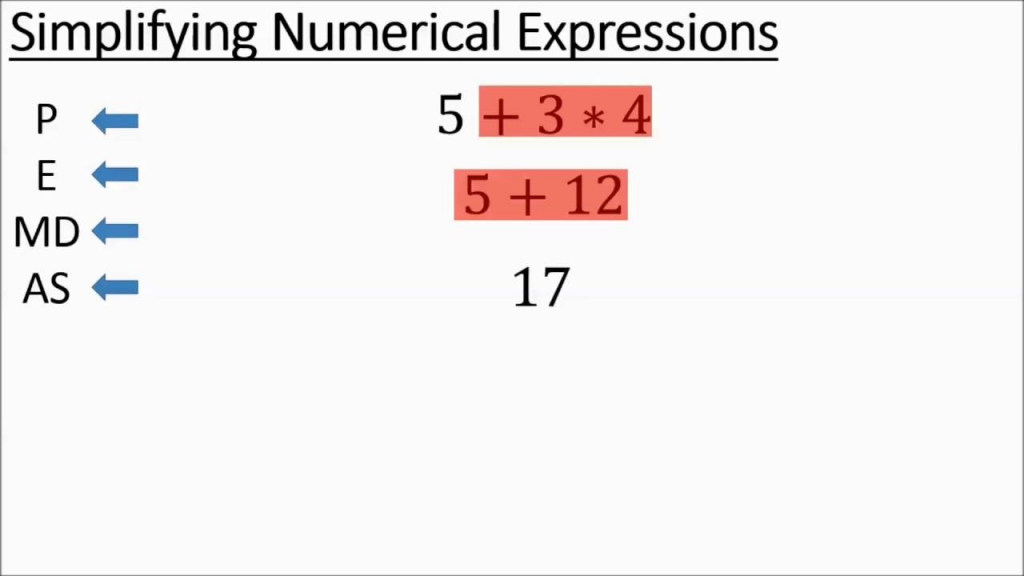
In math for 5th graders, students are taught how to solve numerical expressions using addition, subtraction, multiplication, and division. They also learn the order of operations, also known as PEMDAS, which is a useful tool to remember the order in which to perform functions when solving numerical expressions. PEMDAS stands for Parentheses, Exponents, Multiplication, Division, Addition, and Subtraction.
To illustrate, let’s consider the expression 5 + 6 x (3 – 1). The first step is to solve the expression inside the parentheses, which is 2. Then, the student would multiply 6 by 2, which gives them 12. Finally, they would add 5 and 12 to get the answer, which is 17. It’s essential for parents and teachers to help their 5th graders understand these concepts as they form the foundation for more advanced math skills in the future.
2. Work with decimals
In math for 5th graders, students will gain essential knowledge on adding, subtracting, multiplying, and dividing decimals. Additionally, they will learn how to convert fractions to decimals and vice versa, which is an important skill for daily life.
The knowledge of decimals is crucial for many real-world situations such as measuring distances or calculating money. To illustrate, when adding 2.45 and 1.87, students would need to align the decimal points first, and then add the two numbers as if they were whole numbers to get a total of 4.32.
3. Add and subtract fractions with unlike denominators
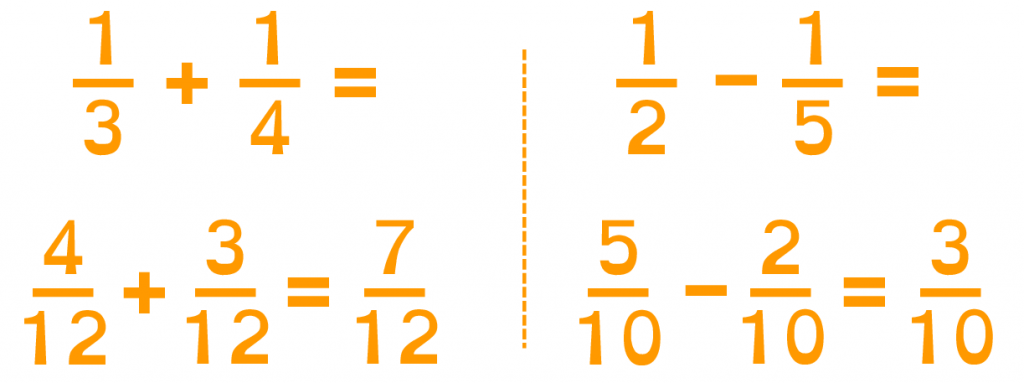
Children will learn how to add and subtract fractions with unlike denominators, which is an important concept in math. Fractions represent a part of a whole, and the denominator tells us how many parts the whole is divided into. When adding or subtracting fractions with unlike denominators, children need to find a common denominator before performing the operation.
For example, if they want to add 1/4 and 3/8, they should first find a common denominator, which in this case is 8. They can then convert 1/4 to 2/8 and add it to 3/8, which gives them the result of 5/8.
4. Multiply and divide fractions
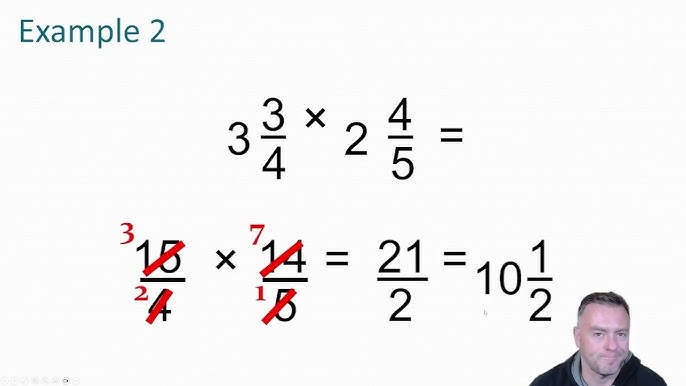
In math for 5th graders, students will focus on learning how to multiply and divide fractions. When multiplying fractions, the numerators and denominators are multiplied together. On the other hand, when dividing fractions, the second fraction is inverted and then multiplied with the first.
For example, if they have to multiply 2/3 and 3/5, they would multiply 2 x 3 to get 6 and 3 x 5 to get 15. This will give them a product of 6/15, which can then be simplified to 2/5.
5. Measure volume
One of the key concepts in math is volume, which refers to the amount of space an object takes up. It is important for students to understand how to determine the volume of different shapes, such as rectangular prisms. In doing so, they will also learn how to measure volume in cubic units.
To find the volume of a rectangular prism, students need to multiply the length, width, and height of the object. For example, if a rectangular prism is 4 units long, 2 units wide, and 3 units high, they would multiply these dimensions (4 x 2 x 3) to get a volume of 24 cubic units. This skill can be applied in real-life situations, such as calculating the amount of water a swimming pool can hold or determining the storage capacity of a container.
6. Graph points on the coordinate plane
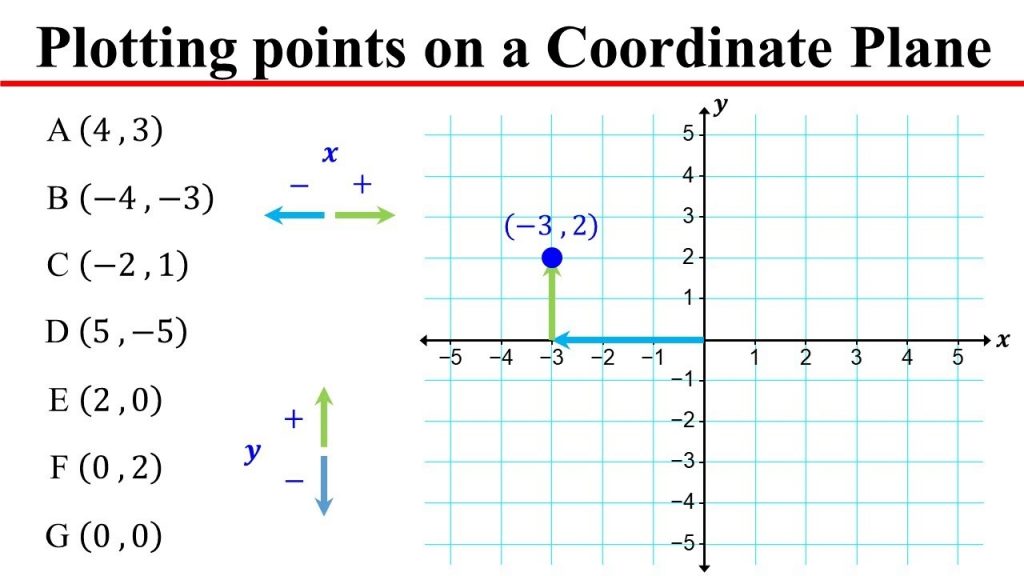
In math for 5th graders, students learn how to graph points on the coordinate plane. This may initially sound complicated, but it is a fun and exciting concept that can help students in many ways.
For instance, graphing points on the coordinate plane is like playing a treasure hunt game, where students must follow specific coordinates to find hidden treasures on a map. This engaging activity can help students develop their problem-solving skills and enhance their ability to follow instructions.
In addition, graphing points on the coordinate plane can also be useful in drawing accurate shapes. Students can use the coordinate plane to ensure that all the sides of a square or rectangle are of equal length, which can help them in geometry and other math-related subjects.
7. Geometry
Geometry is another exciting concept that fifth-grade students learn in math class. Geometry is all about shapes and sizes and can be fun to explore.
For example, Assume your child is an architect working on a new structure. They must guarantee that the walls are straight and that the angles are accurate. This requires a good understanding of geometry.
In fifth grade math, students learn about acute, obtuse, and right angles. They also learn about numerical expressions, decimals, fractions, volume, and many other topics in 5th grade math topics.
One of the fun things about geometry is that it is all around us. They can look for shapes and angles in buildings, furniture, and even nature. For example, a tree trunk can be considered a cylinder, and a soccer ball is a perfect example of a sphere.
Related Reading: Best Math Games for Kids That Are Fun to Play
5 Important Fifth Grade Math Curriculum Goals
As parents and teachers, it’s important to understand the goals to ensure that our students are well-prepared for the future. Fifth grade math skills are crucial for success in higher-level math courses and in daily life. Here are some important goals to keep in mind:
- Understanding fractions and decimals – By fifth grade, students should be able to add, subtract, multiply, and divide fractions and decimals with ease.
- Mastering basic math facts – Students should have memorized their multiplication and division facts up to 12.
- Solving word problems – Students should be able to apply their math skills to real-life situations by interpreting and solving word problems.
- Understanding geometry – Fifth graders should be able to identify and classify shapes, find area and perimeter, and understand basic concepts such as angles and symmetry.
- Analyzing data – Students should be able to interpret and represent data using graphs and charts, and understand basic concepts such as mean, median, and mode.
It is important for fifth graders to have a solid understanding of basic math operations, including multiplication and division, which are commonly referred to as fifth grade math facts, which set them up for success in middle school and beyond.
Related Reading: Steps for Setting Goals for Kids
Mastering 5th Grade Math: Tips and Tricks for Parents to Help their Child Succeed
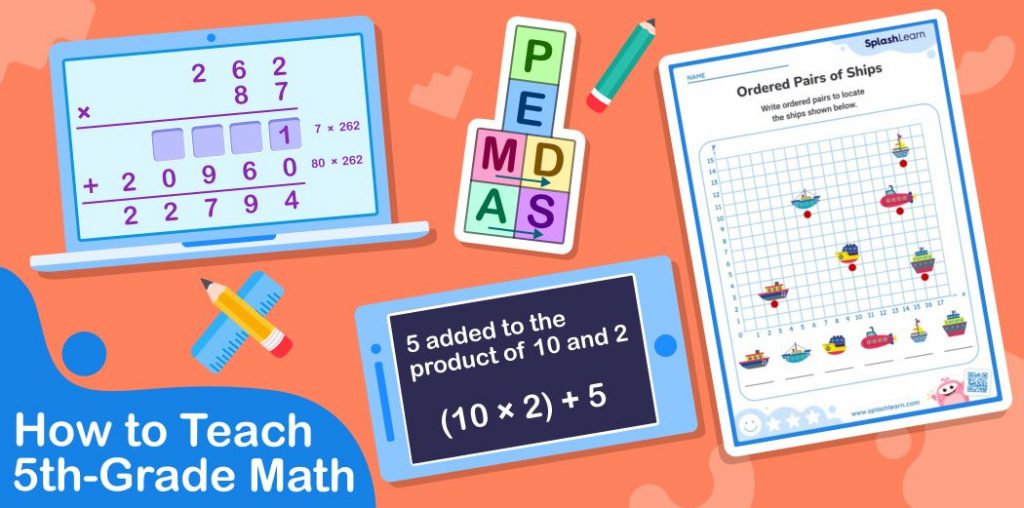
Helping your child with fifth-grade math is essential to prepare them for the more complex concepts they will learn. As a parent, you play a vital role in helping your child learn and excel in math. The first step is to ensure that they have a positive attitude towards math. According to research conducted by Jaime Segarra and Carme Julià, having a positive attitude towards mathematics is crucial for good academic performance in 5th-grade students.
Encouraging your child to practice math regularly is another critical aspect. You can incorporate math into their daily routine by helping them calculate the cost of groceries or the distance between two places. Additionally, providing your child with math resources such as math worksheets for 5th graders, flashcards, and educational websites can be beneficial in strengthening their math skills.
Another way to support your child is by working with them on math homework and providing guidance when needed. Understanding the 5th grade math curriculum and asking your child’s teacher for additional resources or support is essential.
Incorporating online math games and puzzles can make math more enjoyable for your child. You can play games or create your math-based scavenger hunt to keep your child engaged and interested in learning.
Remember to be patient and positive, and celebrate your child’s achievements no matter how small. By helping your child with 5th-grade math, you are setting them up for success in fifth grade and beyond.
Math Is Everywhere!
As educators, we all want the best for our students, and one of the most important skills we can teach them is math. Math is not just a subject to be studied in school, but it is all around us in our daily lives.
For example, when your 5th graders count the number of candies in a jar or measure the length of their bedroom, they are using math. When they go grocery shopping with you, they use math to determine the cost of the items they want. When they bake a cake, they use math to measure the ingredients accurately. And when they play sports, math helps them calculate their team’s score and determine the time left in the game.
Math is about numbers, patterns, shapes, and spatial relationships. Even natural phenomena like the designs on a butterfly’s wings or the symmetry of a snowflake are examples of mathematical concepts. By understanding math, your 5th graders can make sense of the world around them and solve real-world problems.
Moreover, many professions, such as architects, engineers, and scientists, use math extensively. By developing strong math skills, your 5th graders will be better prepared to succeed in these fields in the future.
So, encourage your 5th graders to see math as a valuable and important skill to learn. By mastering math, they will gain the ability to make informed decisions, solve problems, and achieve success in various fields.
Mathematics is not a spectator sport; it requires active participation.” – Edward Burger
Remember that math is more than simply a topic; it is a life skill that one may utilize every day. So encourage them to continue practicing and explore the realm of math.
Related Reading: Best Classroom Math Games
Value of Math Education in the Fifth Grade
As a parent or teacher, you know that 5th grade is a crucial point in a student’s mathematical journey. This is when students learn essential concepts as a foundation for their future studies. These concepts help students develop problem-solving, critical thinking, and logical reasoning skills, which are useful in their personal and professional lives since math surrounds us.
In 5th-grade math, students learn to solve numerical expressions, work with decimals, graph a coordinate plane, and understand other important basic concepts. Although these topics may seem challenging, with practice and dedication, students can master them.
Parents and teachers can help by giving tools, advice, and support, but in the end, it’s up to the students to take charge of their learning and practice often. It’s essential to recognize that 5th-grade math is an exciting and challenging subject, crucial for a student’s future academic and professional success.
One way to help students practice math skills is through digital resources. Research by Nicole Shechtman and Jeremy Roschelle evaluated the efficacy of a digital core curriculum resource for improving achievement in Grade 5 mathematics. Their study supports the idea that using digital resources can effectively enhance math skills in 5th-grade students.
Encourage your child to explore the exciting and challenging math stuff for 5th graders. Remember, hard work and dedication can help them achieve anything they want.
Frequently Asked Questions (FAQs)
What are some essential math skills for 5th-grade students?
Some essential math skills for 5th-grade students include understanding decimals and fractions, working with multi-digit numbers, basic geometry concepts, and problem-solving skills.
How can parents help their 5th-grade child with math homework?
Parents can help their 5th-grade child with math homework by creating a comfortable homework space, reviewing the assignment with their child, breaking down complex problems into smaller parts, and encouraging regular practice.
What are some educational resources available for 5th-grade math students?
Some educational resources available for 5th-grade math students include online math games and exercises, educational apps, workbooks, flashcards, and instructional videos.
How can teachers make math more engaging for 5th-grade students?
Teachers can make math more engaging for 5th-grade students by incorporating hands-on activities, real-world examples, technology, and group projects into their lesson plans.
What common misconceptions about math that 5th-grade students may have?
Some common misconceptions about math that 5th-grade students may have include thinking that math is only about memorizing formulas and that there is only one way to solve an equation. Teachers and parents can help dispel these misconceptions by emphasizing the importance of critical thinking and problem-solving skills in math.

















